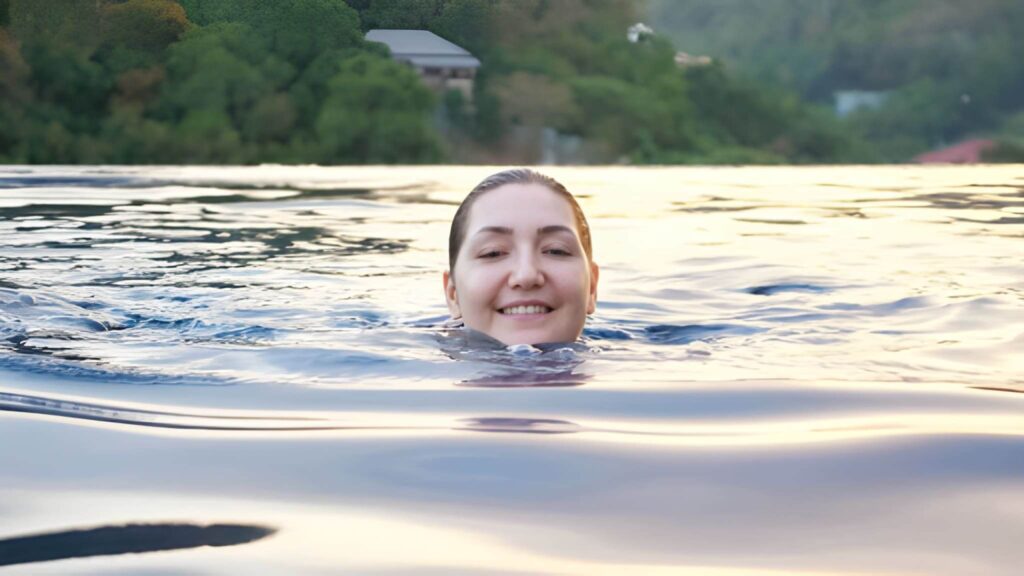Medically Reviewed by Oluwakemi Balogun (Kemi), CRNP, FNP-BC, MSN — Medhaven Health
If you’ve recently had an intrauterine device (IUD) placed, it’s natural to wonder what activities you can safely return to—including swimming. Many of my patients ask, “Can I swim after Mirena insertion?” or “How soon after an IUD can I go back to the pool?” As a family nurse practitioner, I’ll walk you through what’s safe, what to avoid, and how to listen to your body during recovery.
Can You Swim After an IUD Insertion?
The short answer: Yes, you can swim after IUD insertion.
There’s no direct risk of pool water, ocean water, or hot tubs interfering with your IUD. Once the device is placed inside your uterus, it’s fully internal—it doesn’t come into contact with water.
However, while swimming itself isn’t harmful, the timing matters. Most providers recommend waiting at least 24–48 hours after insertion before swimming. This gives your cervix time to close and lowers the risk of infection.
Why Wait Before Swimming?
After your IUD insertion, your cervix is slightly open. That brief window can increase your risk of infection if bacteria enter. Activities such as sex, tampon use, and swimming should generally be delayed until:
-
24 hours minimum has passed (some providers suggest up to 72 hours)
-
Cramping and spotting have eased
-
You feel physically comfortable
Swimming After Mirena Insertion: Is It Different?
Whether you’ve had a Mirena, Kyleena, Skyla, Liletta, or copper IUD (Paragard) inserted, the swimming guidelines are the same. The type of IUD doesn’t change your ability to swim—it’s more about your body’s recovery after insertion.
Signs You’re Ready to Swim Again
Before heading to the pool or beach, check in with your body:
-
Minimal cramping → If cramps are still strong, give it another day or two.
-
Light or no spotting → Swimming with spotting isn’t harmful, but you may feel more comfortable waiting.
-
Energy level → If you feel tired or dizzy, rest instead of exercising.
Can Swimming Dislodge an IUD?
No—swimming cannot dislodge your IUD.
IUD expulsion happens in about 2–10% of patients, usually within the first three months. Causes are related to your body’s natural response, not external activities like swimming, exercise, or sex.
If you notice:
-
Your IUD strings feel longer or shorter
-
You can’t feel the strings at all
-
You feel the hard plastic part of the IUD at your cervix
…schedule an appointment to have it checked.
How Soon Can You Resume Other Water Activities?
-
Hot tubs & saunas → Wait at least 24–48 hours; heat won’t dislodge your IUD, but infection risk is slightly higher in public tubs.
-
Ocean swimming → Same rule as pools—safe once your cervix has closed and you’re comfortable.
-
Baths → Many providers also recommend waiting a day or two before soaking in a tub.
Self-Care Tips After IUD Insertion
Whether you plan to swim or not, here are tips to ease recovery:
-
Rest for 24 hours if possible—your uterus just underwent a procedure.
-
Use ibuprofen or a heating pad for cramping.
-
Wear a pad instead of a tampon until your provider clears you (usually after 24–48 hours).
-
Check your strings once a month after your period to confirm placement.
For guidance, follow-up care, or removal when needed, visit our IUD services in Glen Burnie.”
When to Call Your Doctor
Swimming itself won’t cause complications, but if you notice these symptoms after insertion (whether you swam or not), seek medical attention:
-
Heavy bleeding (soaking more than 1 pad per hour)
-
Severe cramping that doesn’t improve with pain medicine
-
Fever, chills, or foul-smelling discharge
-
Signs your IUD has shifted
Patient Story: Swimming After IUD Placement
One of my patients, Sarah, had a Mirena placed on a Friday morning. She asked if she could go swimming at her gym the same evening. I advised her to wait 48 hours. By Sunday afternoon, her cramping was gone, and she safely returned to her swimming routine without any issues.
This highlights that everybody is different—listening to your provider and your own recovery signs is key.
FAQs About Swimming and IUDs
1. Can I swim the same day as my IUD insertion?
It’s best to wait at least 24 hours before swimming to reduce infection risk.
2. Can pool chlorine damage or affect the IUD?
No, the IUD is completely inside your uterus and isn’t impacted by chlorine or salt water.
3. What if I swim while spotting?
It’s safe, though you may prefer a pad or period-friendly swimwear instead of tampons for the first day or two.
4. Does swimming increase my risk of IUD expulsion?
No—swimming, exercise, or water activities do not cause expulsion.
Key Takeaways
-
Swimming after IUD insertion is safe, but wait at least 24–48 hours.
-
Your type of IUD (Mirena, copper, etc.) does not change swimming guidelines.
-
Focus on your recovery: rest, manage cramping, and monitor spotting.
-
Swimming cannot dislodge your IUD.
-
If you experience pain, fever, or heavy bleeding, contact your provider.
Final Thoughts from a Clinician
As a primary care provider, I reassure patients that life with an IUD should be active and unrestricted. Swimming is not only safe but also a healthy way to stay active after your initial recovery. Give your body a day or two to adjust, and then you can confidently return to the pool, lake, or ocean.
If you’re considering an IUD or have questions about recovery after insertion, don’t hesitate to reach out to a trusted primary care clinic or women’s health specialist in Glen Burnie, Maryland.
Disclaimer: This is informational content, not a substitute for professional medical advice.

CRNP, FNP-BC, MSN is a board-certified Family Nurse Practitioner with 16+ years of experience. She provides personalized, high-quality care in family medicine, preventive health, and chronic disease management at MedHaven Health in Glen Burnie, Maryland. Read More







